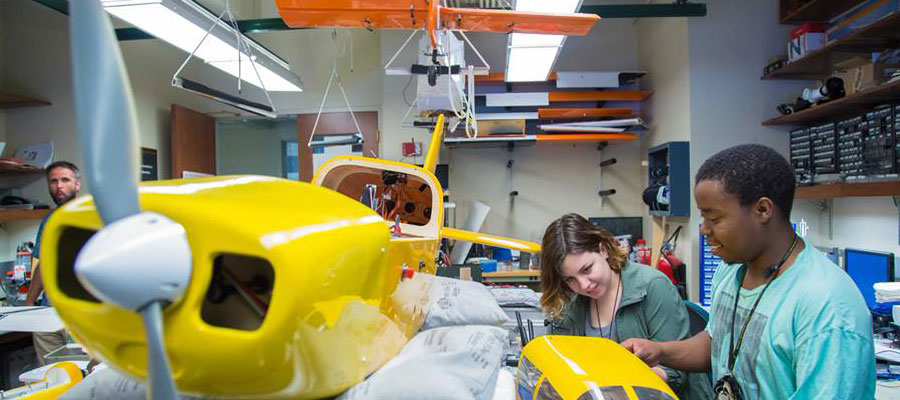Collaborative Unmanned Aerial Vehicles

Unmanned Aerial Vehicles (UAVs) are currently the most dynamic growth sector of the international aerospace industry. Industry predictions are that in the next 3 to 4 years, more than 70,000 jobs will be created in the UAV area with an economic impact of more than $13.6 billion. By 2025, that could increase to more then 100,000 jobs and an economic impact of $82 billion.
Civilian applications for UAVs include such things as aerial photography and cinematography, for which UAVs are already in wide use, agricultural crop inspection and maintenance, wildlife monitoring and protection, land surveying, utility right-of-way inspection, fire fighting, disaster and emergency relief efforts, and search and rescue.
This team will work on cutting-edge research on flight control systems (“autopilots”) and data payload systems for these types of applications. This includes teams of multiple UAVs that use complex algorithms and artificial intelligence techniques to manage themselves as they perform their missions with minimal intervention by ground-based operators.
Projects will include:
- Search and Identify: Development and testing of a collaborative aircraft system allowing a long-range, high-altitude aircraft to survey an area, and automatically dispatch smaller aircraft to examine points of possible interest in detail.
- Collaborative Flight Algorithms: Development and testing of algorithms for formation flight, and/or task-based collaborative flight decisions. Such decisions could include automatically dividing up a search grid among available aircraft. Aircraft may be fixed-wing airplanes, multi-rotors / drones, or VTOL hybrid aircraft.
- VTOL Aircraft Conversion: Development and implementation of a plan to convert a large (10’ wing span, 40 lb.) UAV from fixed-wing flight to hybrid fixed-wing and multirotor flight
Interested? Contact Prof. Robert Klenke (rhklenke@vcu.edu)